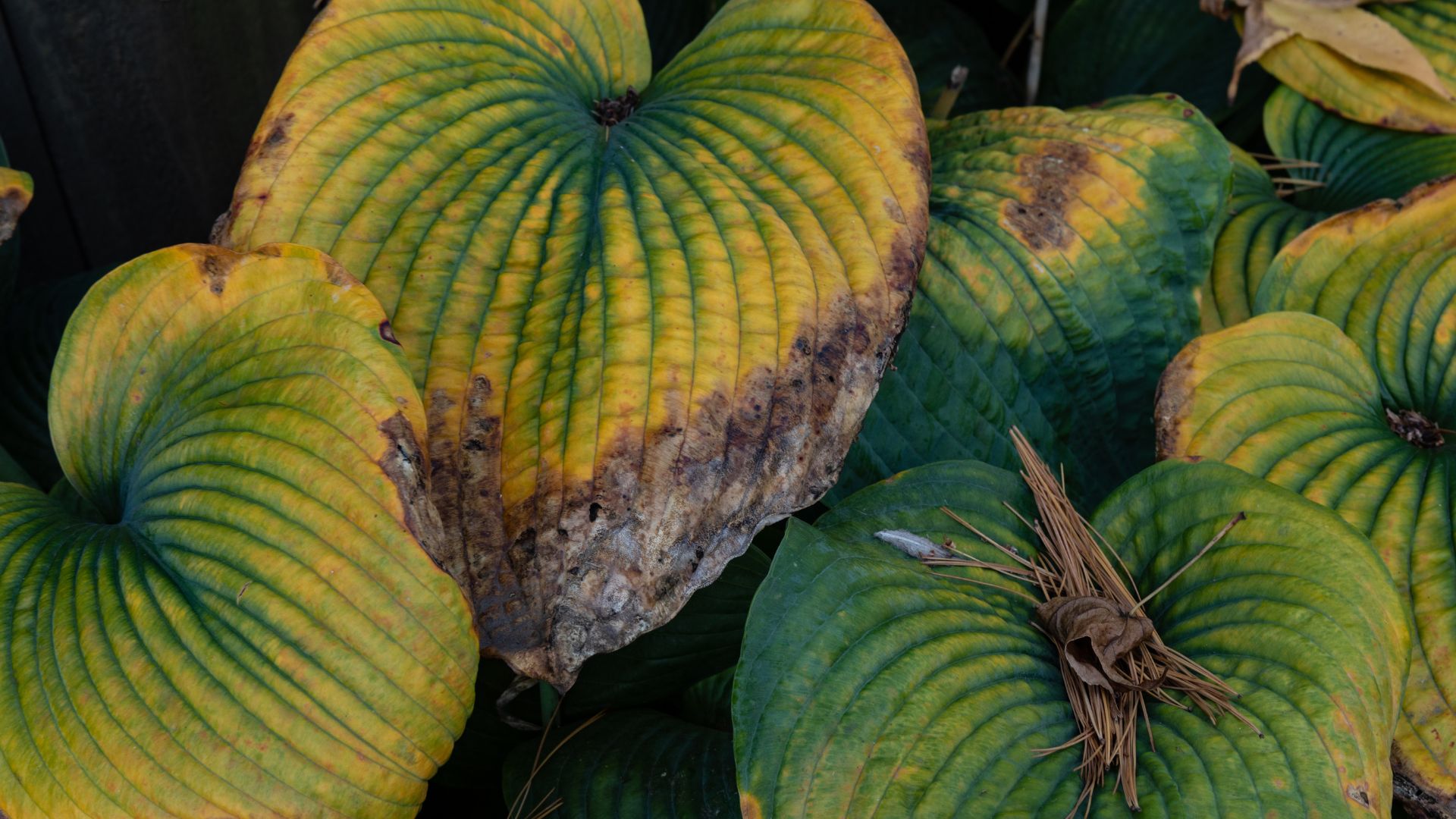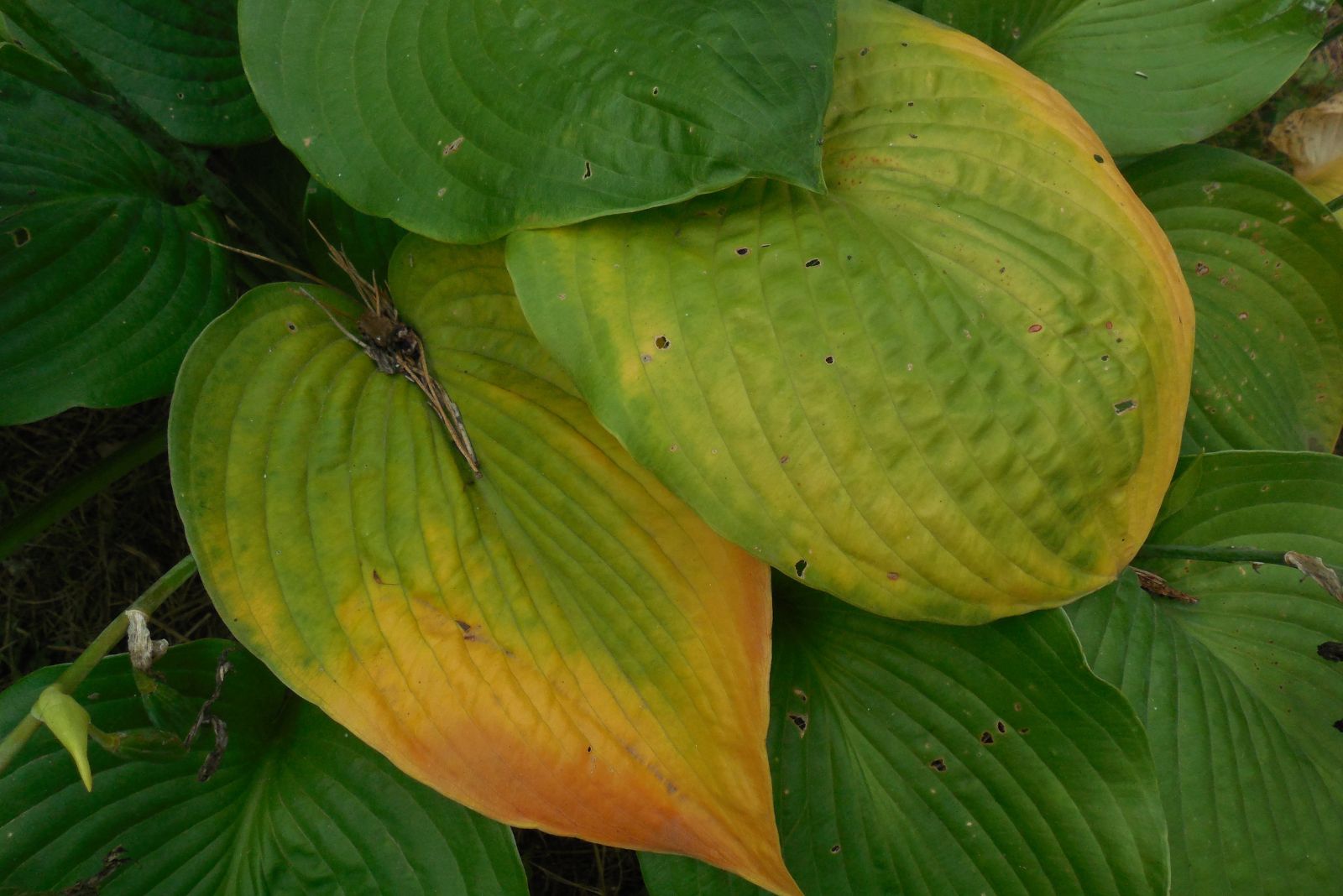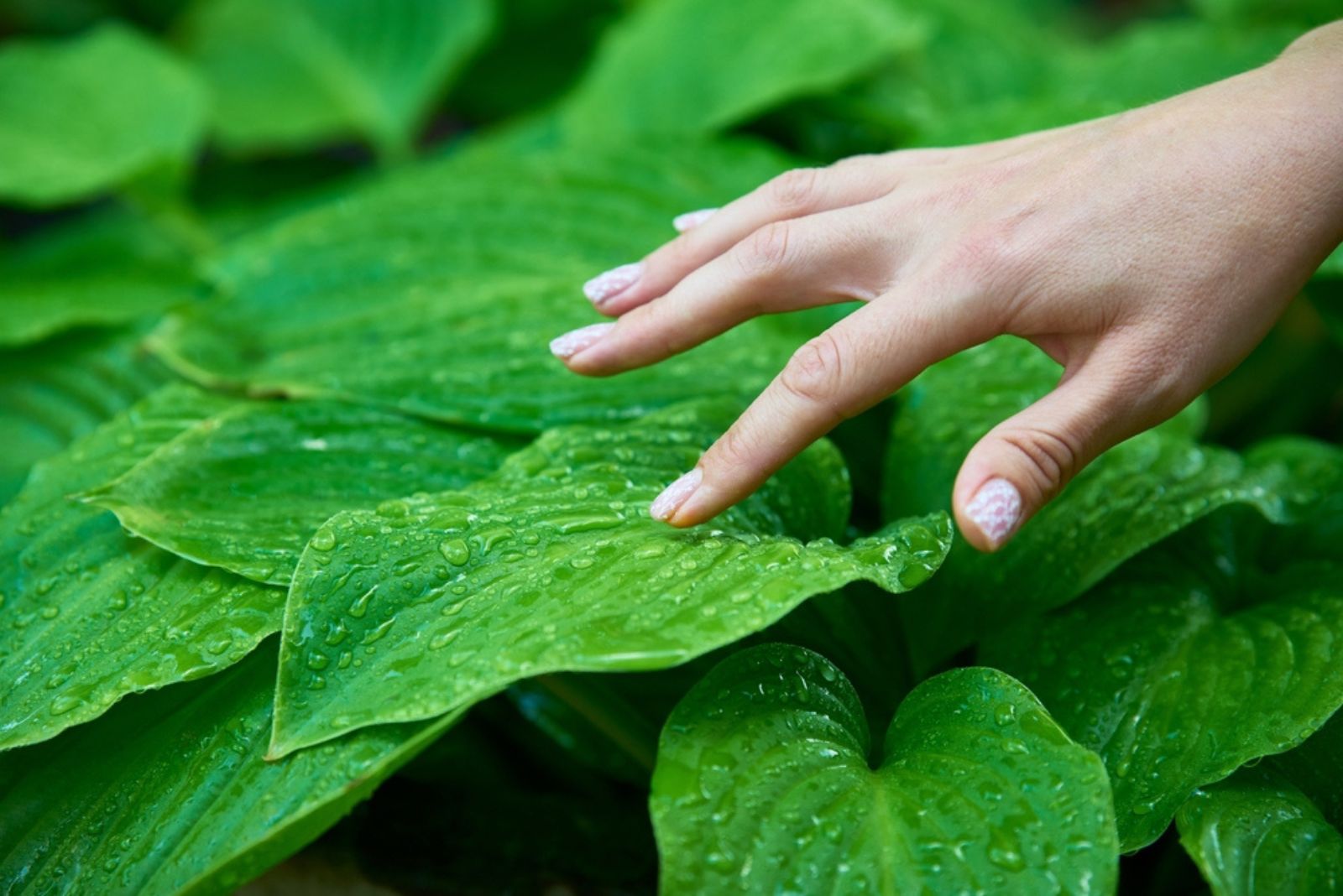My question for many growers is how many hostas they have in their garden rather than if they have any at all. These plants are so popular because they look amazing and their care requirements are way lower than those of some common garden plants.
However, there isn’t such a thing as a problem-free plant and hostas aren’t an exception. Discoloration in plants is actually a common problem so if you have been wondering why your hostas are turning yellow, you’re in the right place to find out.
I’ll show you the causes and also give you some tips that can help you keep your hosta plants green and happy for many years to come!
Let’s get started!
Why Hostas Turn Yellow
Plants display yellowing due to many reasons but when it comes to hostas, you shouldn’t jump to conclusions.
There’s one thing growers often forget about these plants: hostas start turning yellow as the end of the season approaches. Remember that this is a completely normal occurrence and all you need to do is remove discolored foliage in the late fall.
But if the end of the growing season isn’t near or yellowing comes with other symptoms, then close inspection is obligatory.
The main suspects for yellowing are actually environmental conditions. If hostas receive too much sun, they’ll display yellow leaves that are often accompanied by browning of the leaf edges.
Low light may also affect these plants but in this case, the leaves will be light yellow since they don’t receive enough light for photosynthesis.
Overwatering and dehydration may also lead to discoloration, as will too much or too little fertilizer.
Last but not least, annoying pests and diseases may also attack your hostas, which can result in yellow foliage.
Your main task is to check conditions by observing the plant location and soil moisture content and inspecting for pests and diseases.
Let’s see what hostas need to thrive!
How To Keep Your Hostas Green And Healthy
The good thing is that hostas typically easily recover from yellowing caused by environmental conditions. Diseases may cause bigger issues but only in the case of severe infection and when left untreated.
Here’s what you should do!
Find A Shadier Location
Bear in mind that hostas are shade-loving perennials and they can’t withstand harsh sun rays.
Mild morning sun won’t damage these plants and is actually beneficial but if such exposure remains during the hot parts of the day, yellowing is inevitable.
If you keep these plants in containers, all you need to do is transfer them to a shadier location.
On the other hand, if you keep your hostas in the ground, you’ll need to dig up their clumps and plant them in a shadier spot.
If you don’t have any space available, transplant your in-ground hostas to containers. You can also block the sun’s rays from reaching the foliage by placing taller plants next to your hostas or using a shade cloth.
Fertilize And Water On Time
Poor soil is one of the most common reasons why hostas turn yellow or suffer from issues. We should think of the soil quality even before we plant our hostas.
Amending the soil with compost is the best way to aid moisture retention and boost nutrient levels.
Dehydration or lack of water results in yellowing accompanied by curly and crispy leaves. So, your main goal is to keep the soil moist; put your finger in the hosta’s soil, and if it’s dry to the touch, add water.
But make sure you don’t waterlog the soil because this is another dangerous condition that may cause even bigger issues. You’ll know that you overwatered your hostas if the leaves turn yellow and become droopy and soft to the touch.
If the soil of your hostas is too compact and retains too much water, I highly recommend amending it with free-draining materials, such as perlite or pumice.
Your hostas will also benefit from monthly feeding; start in spring and stop fertilizing when the growing season ends, i.e., early fall.
A layer of mulch will also help your hostas remain green and healthy. The additional benefit of this method is that it will suppress weed development in your garden.
Inspect For Diseases
Even though hostas aren’t susceptible to diseases they aren’t completely resistant. Fungal diseases and viruses can attack and cause hostas to lose their beautiful color and turn yellow.
Root rot is probably the most common infection in hostas but if you grow any other plants, you know that this disease is always lurking.
Your hostas will most likely wilt, turn mushy, or even emit a foul odor if they get infected.
The two main causes of this disease are overcrowding and overwatering, so the first thing is to pay attention to spacing when planting your hostas. Good airflow promotes plant growth and decreases susceptibility to pests and diseases.
Fixing an overwatered plant consists of drying and removing the affected parts. However, if the infection is severe, you’ll need to dispose of the plant to prevent the infection from spreading to all your plants.
The last thing I want to remind you is that some hosta species have a yellow color on their leaves naturally; Fire Island and Liberty are some examples. Therefore, check which hosta variety you have before you do anything.
The essential thing when it comes to discoloration is determining the cause without panicking (this is the hardest part). As mentioned, it may be completely normal and nothing to worry about if the rest of the plant looks healthy.
Inspect your hostas carefully and if something is wrong, use our tips to fix it. Good luck!



